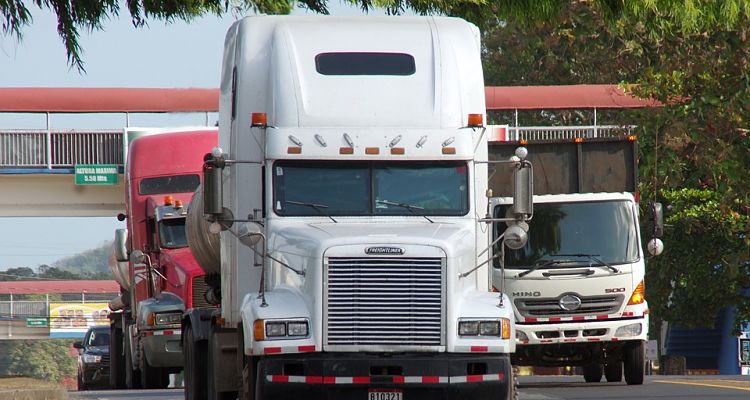
When it comes to renting a moving truck, size does matter. Choosing the right size rental moving truck is a crucial step when planning a move. Renting a truck that is too small might lead to extra trips and costs, and renting a truck that is too large can be inefficient and more expensive than necessary.
It’s quite tempting to make your relocation from one house to another a do-it-yourself moving project, but you could wind up having difficulties if the truck you have rented does not quite measure up. One of the reasons you may choose to rent a moving truck as opposed to having a local moving company move you to your new home is that you want to save money.
Another perk that comes with renting a moving truck is the extra hours packing and loading your items as well. All your money-saving efforts for moving could go down the drain if the moving truck that you rent is not the right size. You want to select a moving truck that is big enough to hold all your household items so that you can transport them all in just one trip.
What is the largest truck you can drive without CDL?
A Class C vehicle may weigh up to 26,000 pounds at the most, including any towed vehicles with a GVWR of no more than 10,000 pounds. Small passenger buses, delivery vans, and box trucks are a few examples of Class C vehicles.
Remember that driving any vehicle larger than a Class C without a CDL may result in fines and penalties. For specific rules and regulations related to commercial driving, it is advised to contact your state’s Department of Motor Vehicles (DMV).
Volume Per Truck
Each rental truck has a predetermined capacity, typically expressed in cubic feet, for the number of objects it can contain. This measurement considers the entire open area of the truck’s storage area, including the floor and the roof. Choosing the wrong truck size would result in making far more trips to and from your new destination, which would ultimately cost you more than you bargain for in gas and other expenses.
Because most people can’t pack a truck so entirely unless they are professional packers, this instantly limits the amount of accessible cubic feet. Therefore, it is always wiser to select a truck that is a little bigger than you anticipate. Therefore, we advise that you never assume the size of all your household items to match a particular tray size. You want a truck that would fit all your items comfortably.
How Big Is Your Home
In addition to the cubic feet measurement, the majority of moving truck rental companies help movers determine their needs by assigning a practical number to their trucks, such as a 20-cubic-foot truck that can hold roughly three rooms’ worth of furniture. The number of bedrooms in your home is a good starting point for determining the size of the moving truck you’ll need. Remember that these numbers are estimates, every household is different. Only the amount of belongings you have in those rooms will truly determine how many rooms a truck can hold.
At the same time, you do not want to guesstimate and select a large truck for your few items only to have extra floored room space that would send your items rolling all over the tray, either. So what can you do to ensure an accurate measurement of your moving truck?
We’re sure that most of you have used or have heard about a mortgage calculator. Well, there is actually a moving calculator that would tally up weight and volume and let you know the size of the truck that you should rent. Most of these calculators are available online, and they allow you to list everything from your fridge to your stove to the magazine rack and curtains for evaluation. At the end of putting in your entry, you are then given the size of the truck and tray that you should rent.
Of course, you can also feel free to ask a mover to assist you in finding the right size truck so you can move. See if the truck rental company is affiliated with any moving company, and then find out if they can visit your home and evaluate your items.
Consider The Weight Limit When Renting a Moving Truck
Renting a truck might be an ideal choice when organizing a move or moving bulky items. To prevent any safety risks on the road, it is crucial to remember the weight restriction of the rental truck. Checking the weight restriction before renting a truck is essential since every rental truck has a maximum weight limit that should not be exceeded. Overloading a truck can result in an imbalanced load, making it difficult to drive the vehicle and perhaps resulting in truck damage or even accidents. The Federal Motor Carrier Safety Administration (FMCSA) requires rental truck companies to provide written safety information to customers.
The U.S. Department of Transportation states that over 4,000 truck-related crashes occur annually due to overloading. Beginning with assessing the weight of your possessions to make sure you don’t go over the rental truck’s weight restriction. This applies to every piece of furniture, appliance, package, and other things you intend to move. Once you have a ballpark figure, you should compare it to the truck’s weight capacity. If your possessions weigh more than the allowed amount, you might need to rent a bigger truck or make other arrangements, like shipping some items separately.
Moving Truck Sizes and Types
Truck rental companies offer a variety of options when it comes to renting moving trucks, including different sizes and features to fit their customers’ needs. Moving truck sizes can range from 10 feet to 26 feet, depending on the rental company. Rental trucks come with varying features, such as lift gates and ramps, which can make your move easier.
PICKUP TRUCKS
Pickup trucks work well for quick local moves involving just a few pieces of furniture. The furniture and appliances can be transported in the truck, and you can load smaller boxes into your own car. Pickup trucks are available for rent at conventional truck rental facilities as well as at some home improvement retailers like Home Depot. If you’re moving just a room’s worth of belongings, a cargo van might be a more economical option than a larger truck.
Cargo Vans
Although cargo vans may not appear to be very large from the outside, you might be surprised by how much can fit inside. If you’re relocating to a studio apartment, college dorm, or even a modest one-bedroom apartment.
Box Trucks 10-26 Ft
The majority of people see box trucks when they hear the term “moving truck.” These are the self-moving industry’s actual heavy hitters, and they frequently work best for most moves, particularly long-distance trips.
Truck Sizes We Recommend
Home size |
Recommended moving truck size |
| 1-bedroom apartment | 10-16 ft. |
|---|---|
| 2-bedroom apartment | 12-22 ft. |
| 3-bedroom house | 16-22 ft. up to 2000 sqft |
| 4+bedroom house | 22-26 ft. over 2000 sqft |
For a 3-bedroom home, you’ll likely need a truck that’s at least 16-22 ft. long to fit all your belongings.
Considerations for Specialty Items
Specialty items such as pianos, delicate antiques, and pool tables need to be moved with extreme caution. It is critical to select the appropriate truck size for these commodities in order to effectively fit their dimensions and weight. It’s critical to choose a vehicle that can accommodate non-standard-sized specialty items and has enough weight capacity for safe loading and transport. By addressing these special requirements, the essay gives useful insights that will assist readers in making educated selections and ensuring the safe transit of their unique belongings.
In addition to size and weight considerations, handling procedures for unique products should be considered. Delicate equipment, such as pianos or pool tables, require appropriate padding, strapping, and immobilization to minimize the potential of damage during transport. Handling techniques such as professional piano boards or protective covers may be required.
Distance of Your Move
When determining the size of a rental moving truck, the distance of your move is a critical part to take into account. Choosing a larger truck to avoid making multiple trips may be more convenient if you’re moving a long distance. In addition to saving you time and money on gasoline, a larger vehicle can carry more cargo on a single trip. It might be more economical to rent a smaller vehicle that can make several trips if you’re only moving a short distance.
Larger trucks could be more comfortable for long-distance moves, but they can also be harder to drive, especially if you’re not used to doing so. Even though a smaller box truck could be easier to maneuver, it might not have enough room to carry all of your belongings in one trip. To ensure a seamless and stress-free move, the ideal size-convenience ratio must be struck. Creating a moving checklist can help you keep track of all the tasks you need to complete, from selecting the right truck size to packing your items efficiently.
Your Driving Experience
Driving moving trucks requires different skills and considerations than driving a regular sedan or SUV due to the size and handling capabilities of the vehicle. Your driving experience must be taken into consideration when thinking about renting a moving truck. Choosing a smaller, more maneuverable truck may be preferable if you’re not used to operating a big vehicle. A distinct set of skills are needed to operate a moving truck than they are to operate a normal vehicle.
If you’re not comfortable driving a large vehicle, consider using a moving container service as an alternative. Getting around parking lots and confined areas may be more difficult with a truck that is bigger. Furthermore, how the load is distributed might impact how the truck drives and maneuvers on the road.
According to a study by the FMCSA, 45% of truck crashes are due to driver error, which includes improper loading. A smaller truck might offer a more comfortable driving experience and lower accident risk. Smaller trucks are easier to drive and park, which can be helpful if you’re traveling through a city or neighborhood with backstreets. But you have to make sure the smaller truck is still big enough to carry all of your goods safely. Consider your driving history, the size and weight of your load, the terrain you’ll be traveling on, and the road conditions before making a final choice.
Road Conditions Impact Your Moving Truck Size Choice
When choosing the truck rental size, it’s crucial to take into account the terrain and road conditions you’ll encounter. A larger truck with a more powerful engine may be required if you’re moving through a region with high hills or mountains to ensure a secure and effective move. Smaller trucks could find it difficult to ascend slopes and might need to make several trips to transport all of your belongings.
A smaller vehicle might also be a better choice if you’re moving through a residential area with small streets or tight turns. You run the danger of harming your possessions or the truck if you use a larger truck to navigate these difficulties. It’s important to evaluate the road conditions and choose a truck size that can withstand the demands of the terrain while also assuring the safety of yourself and your things. Always opt for rental companies that offer 24/7 roadside assistance. This is a lifesaver in case of breakdowns or other emergencies.
Weather and Seasonal Factors
The moving procedure is heavily influenced by weather and seasons, including the selection of the proper truck size. Weather considerations are critical for a successful and safe move. In bad weather, such as heavy rain or snow, a larger vehicle size allows for greater organizing and moisture protection of items. Extreme temperatures can also have an impact on specific things, so choosing a truck with insulation or climate control systems can assist in protecting temperature-sensitive objects.
Handling weather-related issues while on the go necessitates effective advice. Furniture and boxes can be protected from rain by using waterproof covers, tarps, or plastic wrap. In snowy or icy circumstances, equipping the truck with appropriate tires and chains, as well as taking extra precautions during loading and unloading, reduces the chance of an accident.
Maneuverability Challenges
Maneuverability issues can develop when renting a larger moving truck in tight roadways and congested locations. To address these challenges, plan your trip ahead of time, research the site for parking alternatives, and choose a smaller truck for more versatility. Use spotters to help you navigate tight spaces, and take advantage of technology such as rearview cameras and parking sensors.
Drive in an open area to get used to the truck’s proportions and to be aware of blind spots. To maneuver safely on the road, give yourself extra room, speak with other drivers and exhibit patience. Always double-check the truck’s lights and signals before starting your move.
Budget
While deciding on the truck sizes, budget is a crucial factor to take into account. It’s critical to select a truck size that meets your requirements without going over your budget. The average cost of renting a moving truck can range from $40 to $160 per day, depending on the size and rental location. In general, larger trucks or cargo vans are more expensive to rent and could use more fuel, which might add up quickly if you’re going a distance. But, selecting a smaller truck that is insufficient for your move might also prove to be expensive, since it might necessitate additional trips and extra time to accomplish the move.
You can save money without compromising the size or quality of the rental vehicle by taking advantage of the discounts or special offers that many truck rental agencies, particularly in the off-season, offer. Finding the appropriate size of a rental moving truck that meets your objectives and keeps your costs in check requires matching your budget with your moving requirements. If you’re moving across different time zones, factor this into your rental period to avoid unexpected late fees.
What You Didn’t Know About
The Aerodynamics of Packing
Surprisingly, the way you load your truck can have a real impact on its fuel efficiency. A disorganized load can generate extra air drag, consequently boosting fuel use. Mastering the principles of aerodynamic loading can lead to substantial cost savings, particularly on extended journeys.
The Hidden Costs of Overloading
Exceeding a truck’s weight limit is not only hazardous but can also lead to legal repercussions. In the United States, individual states enforce their own penalties for vehicles carrying excess weight. The fines for this violation can vary significantly, from hundreds to potentially thousands of dollars, contingent upon the state and the severity of the overload.
The “Rush Hour” Factor
Timing is everything, even when renting a moving truck. Rental rates can fluctuate based on demand, similar to airline tickets. Booking your truck for mid-week or mid-month can offer significant savings, as these are typically low-demand periods.
The Underestimated Importance of Suspension
The quality of a truck’s suspension system is crucial for safeguarding your possessions. Trucks equipped with subpar or outdated suspension can generate excessive bumps and shakes, elevating the likelihood of harm to your belongings. Make sure to investigate the state of the truck’s suspension before finalizing your choice.
The “Local vs. One-Way” Dilemma
Rental rates can vary significantly depending on whether you’re making a local move or a one-way trip. Some companies offer unlimited mileage for local moves but charge a premium for one-way trips. Knowing this can help you budget more accurately.
The Hidden Layer of Insurance
Standard insurance may not provide full coverage for every kind of damage. Enhanced insurance options such as “Goods in Transit” or supplementary liability coverage can deliver more robust protection, albeit at a higher expense. When moving cross country, it’s advisable to opt for a comprehensive insurance package to cover any unforeseen incidents.
Undiscussed Challenges and How To Address Them
The Weekend Dilemma
Many people opt to move over the weekend, causing a surge in demand for rental trucks. This can lead to limited availability, forcing you to compromise on the size of the truck you need.
Solution: Plan and book your moving truck well in advance, especially if you intend to move over a weekend. This ensures you get the size you need and may also allow you to take advantage of early booking discounts.
The City Driving Dilemma
In urban settings, you may encounter low bridges, narrow lanes, or height-restricted parking garages. These can be a nightmare if you’ve rented a tall or wide truck.
Solution: Research the specific road conditions and restrictions in both your current and future locations. Opt for a truck that complies with these limitations without compromising on the space you need for your belongings.
The “Fuel Fiasco”
The fuel efficiency of rental trucks can vary significantly vary between truck sizes, from 6 to 12 miles per gallon. Renting a larger truck than necessary can lead to exorbitant fuel costs, especially for long-distance moves.
Solution: Calculate the fuel efficiency of the available truck sizes in miles per gallon (MPG) and factor this into your overall moving budget. This will help you make a more informed decision on the size of the truck you rent.
Conclusion
By considering these factors, you can choose the perfect moving truck size that will fulfill your requirements and guarantee a quick and painless move.
Your specific needs and preferences will ultimately determine the ideal size of a rented moving truck. To find the ideal fit for your case, it’s crucial to take the time to thoroughly research and compare numerous possibilities from different truck rental providers. You can choose the appropriate size of a rental moving truck with careful planning and consideration, making your move as easy and successful as possible.
Storage Units Near You





Leave a Comment